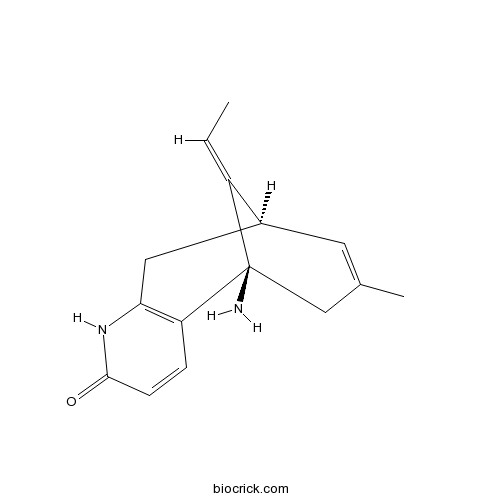Huperzia serrata
Huperzia serrata
1. The products in our compound library are selected from thousands of unique natural products; 2. It has the characteristics of diverse structure, diverse sources and wide coverage of activities; 3. Provide information on the activity of products from major journals, patents and research reports around the world, providing theoretical direction and research basis for further research and screening; 4. Free combination according to the type, source, target and disease of natural product; 5. The compound powder is placed in a covered tube and then discharged into a 10 x 10 cryostat; 6. Transport in ice pack or dry ice pack. Please store it at -20 °C as soon as possible after receiving the product, and use it as soon as possible after opening.
Natural products/compounds from Huperzia serrata
- Cat.No. Product Name CAS Number COA
-
BCN1057
(-)-Huperzine A102518-79-6
Instructions

-
BCN1059
Huperzine B103548-82-9
Instructions

A Study of a Supplement Containing Huperzine A and Curcumin in Dementia Patients and Individuals with Mild Cognitive Impairment.[Pubmed: 29614668]
Extracts from Huperzia serrata (HS) function as a cholinesterase inhibitor and a glutamic acid receptor antagonist. We tested a supplement containing HS extracts, curcumin, and others in dementia patients and individuals with mild cognitive impairment (MCI) in an open label study. Most patients with Alzheimer's disease, dementia with Lewy bodies, and MCI individuals exhibited improvements in cognitive functions, as assessed by the Alzheimer's Disease Assessment Scale-cognitive subscale Japanese version. The scores were significantly improved at 6-12 weeks compared with baseline scores (p = 0.007) and at 22-28 weeks (p = 0.004). Thus, this supplement may be administered to dementia patients as well as MCI individuals.
Insights into Pipecolic Acid Biosynthesis in Huperzia serrata.[Pubmed: 29589944]
For the biosynthesis of Pip in Huperzia serrata, the mechanistic studies were evaluated. Through a series of biochemical analyses, Pip is biosynthesized through a two-step cascade reaction. Three intermediates possibly exist simultaneously as an equilibrium matter in the first-step reaction catalyzed by HsAld1, while HsSard4 performs as a ketimine reductase and chemoselectively and stereoselectively takes 1,2-dehydropipecolic acid as the preferred substrate in vitro.
3,5-Dimethylorsellinic Acid Derived Meroterpenoids from Penicillium chrysogenum MT-12, an Endophytic Fungus Isolated from Huperzia serrata.[Pubmed: 28960979]
None
Nitric oxide inhibitory polyketides from Penicillium chrysogenum MT-12, an endophytic fungus isolated from Huperzia serrata.[Pubmed: 28958955]
None
Allobranchiibius huperziae gen. nov., sp. nov., a member of Dermacoccaceae isolated from the root of a medicinal plant Huperzia serrata (Thunb.).[Pubmed: 28920829]
None
Effect of Chinese Herbal Medicine on Alzheimer's Disease.[Pubmed: 28807163]
Alzheimer's disease (AD) is reaching epidemic proportions yet treatment strategies are limited and are restricted to providing symptomatic relief for the cognitive and behavioral and psychological symptoms of dementia (BPSD). Chinese herbal medicine (CHM) has been a valuable source of medicines for centuries and research has burgeoned in recent years to understand the scientific basis for their use. Some plants have been used in CHM for AD symptoms (e.g., Polygala tenuifolia), while others are CHMs for different conditions, but they show mechanistic effects relevant to AD (e.g., Salvia miltiorrhiza). Some CHMs (e.g., Ginkgo biloba extract, and huperzine A from Huperzia serrata) show pharmacological activities relevant to AD, and promising effects on cognitive functions in clinical trials. Other CHMs show effects relevant to BPSD (e.g., Crocus sativus). This chapter discusses available scientific evidence for CHM plants and formulae that have been used both traditionally for AD, and those that have been used traditionally but not specifically for AD symptoms, and encompasses chemical, pharmacological and clinical studies. The ethnopharmacological approach to understanding the use of CHMs for AD is also discussed.
Lycodine-Type Lycopodium Alkaloids from the Whole Plants of Huperzia serrata.[Pubmed: 28744720]
None


